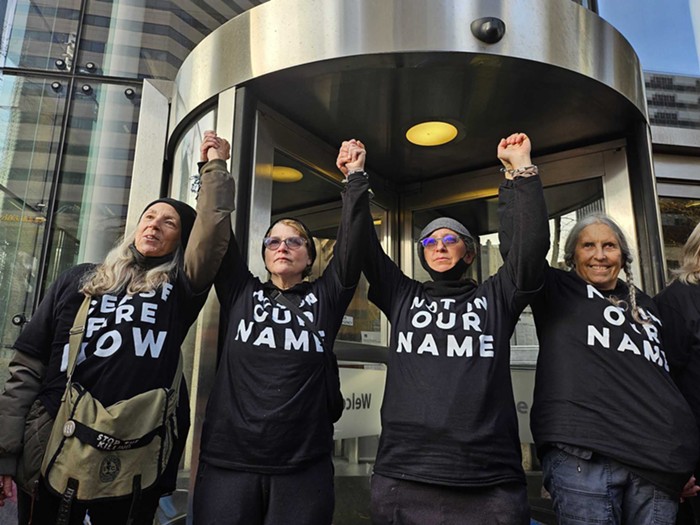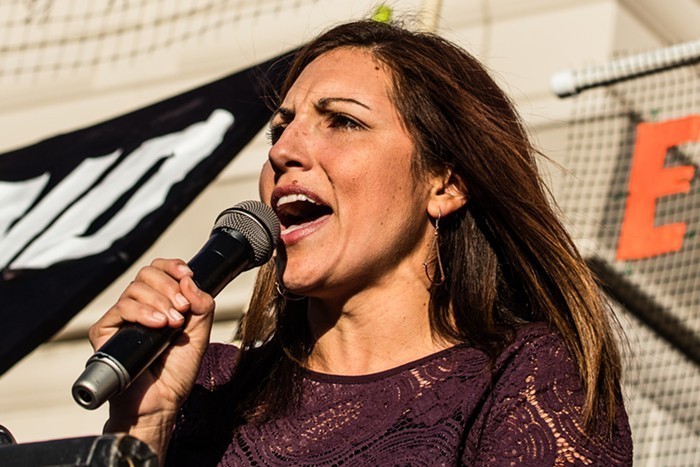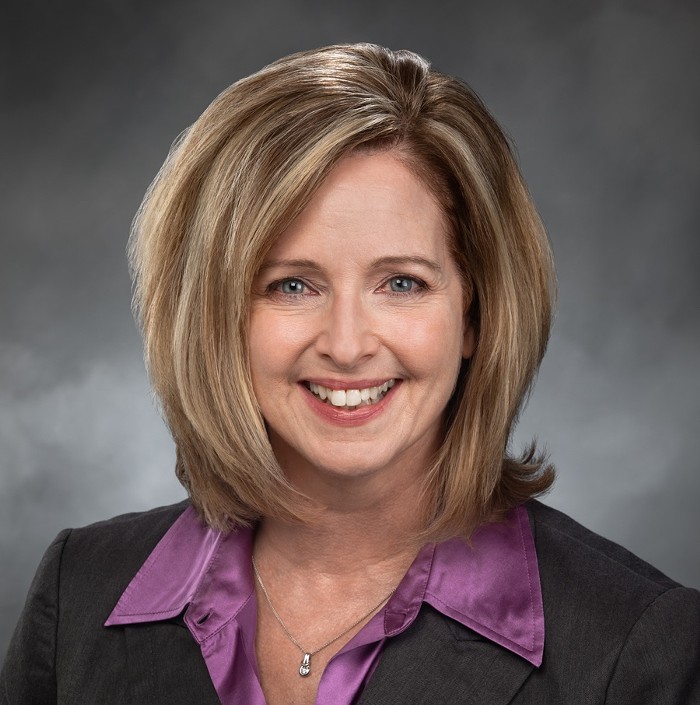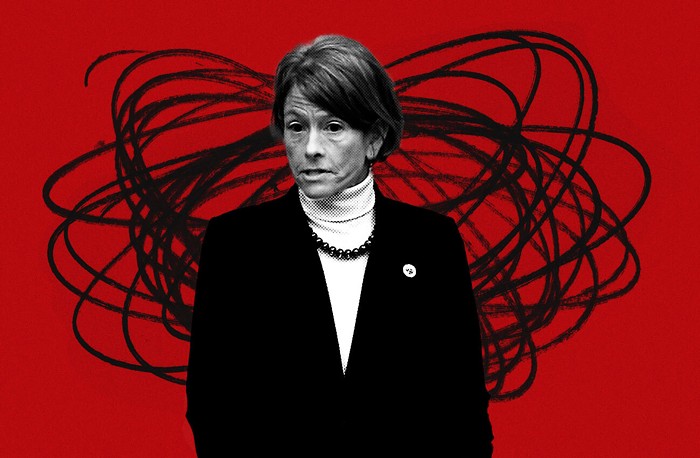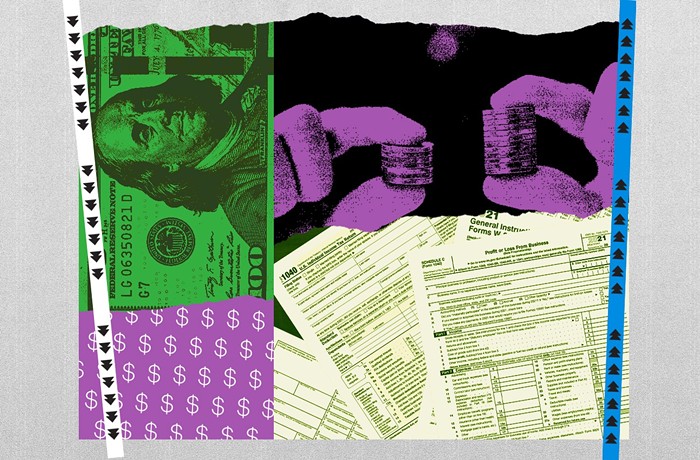On March 1, Rusty Figgins, master distiller at Batch 206, walked through the front door of Oddfellows Cafe & Bar with a case of vodka on his shoulder and a smile on his face.
Figgins said he'd been working at the distillery since two that morning, but he looked chipper as he posed for a photo, set his box on a table, and stood by while Oddfellows owner Linda Derschang wrote him a check.
That morning, for the first time since 1919—the year Prohibition began—restaurateurs were legally buying spirits from someone besides the state. Our state monopoly on liquor had ended.
Even though Washington's liquor business has crossed the threshold of privatization, it isn't all craft distillers and rosy smiles. The turbulence over what the new landscape will look like (the variety of brands, who will pay which taxes and fees, who will control the almighty distribution channels between distillers and store shelves, and how much your favorite drink will cost in six months as a result) is still roiling.
Voters passed Initiative 1183 last November, after retail giant Costco spent almost a year drafting it and more than $22 million (a state record) to stump for it. But after all that effort and money, Costco finds itself fighting two behemoth national liquor distributors for control of the new market.
"It's a big initiative that impacts several layers of the industry," says attorney Stephanie Meier, who specializes in food and beverage law. "This is a lot to deal with, and there are many parties that have a stake in the outcome."
According to its annual report, the state sold $890 million worth of alcohol in 2011, and the Seattle Times has reported that Costco stands to make more than $81 million a year from selling spirits. In the past 30 days, 448 businesses have applied for "spirits retailer" licenses—I-1183 opened the door to privatization, and now businesses are fighting to see how many of them can squeeze through the frame.
The biggest fight at the moment, according to pretty much everyone paying attention, is over an ambiguous phrase in the initiative that restricts the volume of sales from one retailer to another. That is, it would limit businesses like Costco from selling more than three cases of liquor at a time to a bar or restaurant, which is partly what they raised $22.5 million hoping to do. According to the initiative, "no single sale" from one retailer to another "may exceed twenty-four liters" (three cases).
Now the three members of the Washington State Liquor Control Board (WSLCB) are trying to decide what a "single sale" means. Costco argues the rule should stand as written—a "single sale" is a single sale, and on any visit to Costco, a bar may make as many three-case, retail-to-retail purchases as it likes.
Meanwhile, the two big liquor distributors, Young's Market Company and Southern Wine & Spirits, are lobbying the WSLCB to rule that "single sale" means one sale per day, effectively shutting Costco out.
"Costco is not getting a distributor license, but it wants to act like a distributor," says WSLCB spokesman Brian Smith. Young's and Southern argue that Costco's interpretation of the rule would give it an unfair advantage—Costco wouldn't be on the hook for the $150 million the state says distributors must pay in licensing fees by March 31, 2013. (If the distributors' fees don't total $150 million by that date, each will have to write a check to the state for its share of the shortfall.)
The WSLCB, Smith says, is currently leaning toward the 24 liters per day interpretation of the rule—which would cut Costco out of the distribution game and effectively give Young's and Southern a lock on an estimated 90 percent of spirits sales. That scares some restaurant and bar owners, even ones who resisted Costco during the I-1183 campaign. Without Costco exerting some market competition, they worry, Young's and Southern will replace our state monopoly with a corporate duopoly and set prices at their whim.
"Young's and Southern are going to our members and saying, 'You're going to have to accept a 30 percent price hike,'" says Bruce Beckett of the Washington Restaurant Association. "They're out there trying to gouge the market."
The WSLCB is taking public comment on the rules until May 23, but some worry that no matter what it decides, liquor prices will spike. "Because of beer 'competition,' do beer prices at bars go down?" asks bar owner Dave Meinert. "No! The two major distributors raise their prices in identical ways at identical times. It happened three times last year."
Young's, Southern, and Costco all declined to comment or did not respond to requests for comment. Other distributors and retailers are reluctant to estimate how much they'll be charging for spirits. "We're trying not to give away too many of our trade secrets," says Andrew Bohrer of Vinum, a wine distributor that's trying to break into the spirits market. "We're all holding the cards really close."
Grocery retailers such as QFC are also taking it slowly. According to QFC liquor czar Dale Wilson, "We're waiting to see how the taxes are applied." According to their current math, could spirits be cheaper under I-1183 than they were before? "No, no," he says. "Not even close."
The Costco/distributor fight isn't the only friction of transitioning into a privatized liquor market. Some small distillers worry that they'll have a more difficult time competing for shelf space with big brands, which have enormous national contracts with distributors such as Young's and Southern. (Before I-1183, small distillers applied directly to the state for shelf space.) There are questions about central-warehousing rules, which might allow bars to pool their orders and qualify for volume discounts from distributors. And there's the question of what will happen to the 166 state liquor storefronts. The initiative says new stores must be more than 10,000 square feet to sell liquor, but the leases to the old state stores (which are less than 10,000 square feet) will be auctioned off with a right to sell liquor, per agreement from the respective landlords.
"Other concerns? There are a hundred of them," says Smith at the WSLCB, who also guesses liquor prices will go up under I-1183, perhaps by 20 percent. "That's what's invisible to the public—they saw privatization and voted it in, but it affects all the different business entities in different ways. That's what the LCB is working through."
Nobody knows what will happen, of course, especially not until the rules governing I-1183 have been written and June 1 arrives, when the public starts buying spirits—or not buying spirits, depending on how much money people are willing to spend.
Amid all the anxiety, Orlin Sorensen of Woodinville Whiskey is a rare voice of optimism: "There will be some bumpiness, but the liquor control board and lawmakers will make sure it all works out... I think we'll all look back on this and say, 'The transition was tough, but it turned out fine.'" ![]()
This article has been updated since its original publication.
